

What kind of scenery does an artist see when they are on a journey; when they quietly ponder at night in solitude, when they encounter strangers, or when they spend time contemplating the answers to questions they have? Perhaps there would be a unique journey for every artist and every city. Artist in Residences (AIRs) provide bases for their journey. In each issue of the Artist on a Journey – Artist’s views of a city through Artist in Residence – series, we invite an artist to travel, visit AIRs, and write about the scenery they encounter on their journey.
For the second issue of the series, we have invited the artist Aki Nagasaka. Based on thorough research in historical, cultural, and scientific backgrounds of the things she encounters in her daily life, Nagasaka creates a unique world through storytelling in her artwork. According to her, people, objects, and events she had encountered during her journeys and stays at AIRs have fed into her artmaking. We have asked her to write about her ongoing journey, which started from her encounter with Hokkaido and led her to her new artistic base in Hong Kong.

It was in 2018 that I genuinely encountered Hokkaido and the AIR in Sapporo called Sapporo Tenjinyama Art Studio, however, there is a series of events that led me to encounter.
First of all, I wrapped up my artistic practice, which I had been doing for a long time abroad, including in the United States, Germany, and England, and in 2013 I relocated myself to Japan. In 2014, I participated in the AIR program at Contemporary Art Centre Aomori (ACAC) to make a new work and have an exhibition for the first time in Japan after my relocation. At the opening of the exhibition, I met Ms. Mami Odai, the AIR director at Sapporo Tenjinyama Art Studio. She told us about a residence, which had just opened that year, but, as I was still new and unfamiliar with Japanese art scenes, I did not really understand what she told us.
Some time passed and, in 2016, when I felt a bit more accustomed to living and working in Japan, I had an opportunity to do research for one of the projects I started in London; the last place I lived before moving back to Japan. The project is about a lion sculpture, which is in the collection of the British Museum, and I traveled to England, Greece, and Turkey in the early summer, following the traces the lion sculpture had traveled thousands of years ago. And, in order to fully focus on the project, I decided to spend about one month at Sapporo Tenjinyama Art Studio during the summer. My stay there was such a surreal one because I was physically in Hokkaido yet I was imaginary traveling back and forth in time between the ancient and present Mediterranean region. While working in my studio, I gazed at lush green leaves absorbing the crisp sunlight, which is particular in the northern regions, through the windows. I also made walking in the neighborhood part of my daily route. Through those activities, I sensed the air and energy that Hokkaido carries and I thought I would like to come back to this island again and make artwork about it.
In January 2018, my wish came true and I stayed at Tenjinyama Art Studio for three months, working as a part-time translator. During my stay, I randomly decided to take a trip to the Shiretoko Peninsula in East Hokkaido and I had a great time and positive encounters with the local people there. Through the trip, I got to know the existence of a highly acidic hot spring waterfalls, called Kamuy-Wakka hot waterfalls, and a mysterious species of algae living in the waterfalls, called Cyanidium caldarium. The name of the waterfalls, kamuy-wakkka, means ‘god water’ and ‘evil water’ in the Ainu indigenous people’s language, and the existence of the algae prompted me to embark on a project in Hokkaido. I did research, made a pilgrimage to the waterfalls by foot through snow, and had an opportunity to exhibit the work I made based on the journey in Sapporo.

Scenery from my daily walk in Sapporo / Toyohira River

The lion sculpture in the collection of the British Museum in London ©Aki Nagasaka

The promontory, where the lion sculpture once existed, near the ancient city of Knidos in Turkey ©Aki Nagasaka
Artwork themed around the lion sculpture:
Created by the grasp of hands, it started to crumble in the midst of formation. What would remain as its traces…? 02_Lion 2016 – ongoing / Installation with video & narration and drawings©Takuma Uemastu
Installation images from the exhibition “HER/HISTORY” at Kishiwada Jisen Hall, 2020 ©Aki Nagasaka
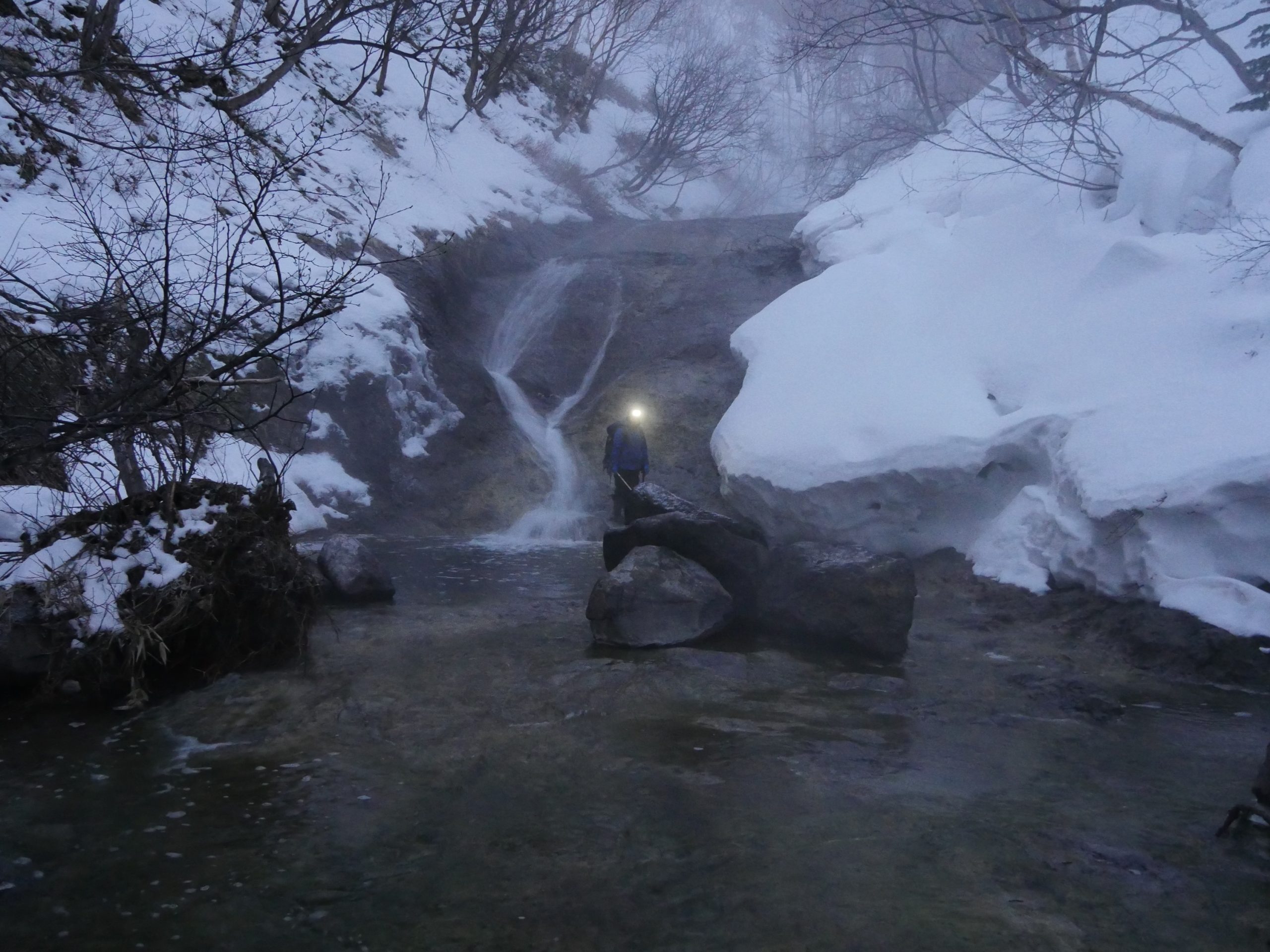
Kamuy-Wakka hot waterfalls ©Aki Nagasaka
Artwork connected to the Shiretoko Peninsula:
To the Kamuy-Wakka, To the Spring of Eukaryotes
2018 / Installation with video & narration and sculpture (stromatolite fossils, Cyanidium caldarium algae, and iron plate)©Yoshisato Komaki
Installation images of the exhibition “To the Kamuy-Wakka, To the Spring of Eukaryotes” at Contemporary Art Institute CAI02, 2018 ©Yoshisato Komaki
Exhibition review by Hiroyuki Hattori (Bijutsutecho)
https://bijutsutecho.com/magazine/review/18955
Sapporo Tenjinyama Art Studio is a very pleasant place for me. It charms me every time I stay there and makes me want to come back repeatedly.
I like the location and I always feel great air and energy there. It is standing on a hill in Tenjinyama Park, which is situated four or five stations away from the city center. Different species of trees are growing around the studio building, and they change their appearances in every season. Mt. Moiwa, a small mountain standing on the opposite side, is also visible from the top of the hill.
I have heard that this place is an ancient Jomon site, and considering its location being on the hilltop, perhaps the Jomon people used to perform some kind of rituals at this place. The Ainu people also built a fortification, called chashi, here and this place must have played an important role in their life. Later on, the Japanese settlers built a branch of their original Soma shrine there, which exists in Fukushima prefecture. The shrine and one of the sacred trees in the shrine garden (a more-than 300 year-old chestnut tree) still stand next to the art studio. I imagine that the hill, which can look out over the surrounding area, and the air and energy of this place have attracted people throughout all of time. I think these very qualities also attract us, who are living in the present times, and we come back to this place repeatedly.
I also really like the staff working at the studio and the atmosphere they create. Among the staff, there are people, who are very experienced and have organized numerous art projects in Hokkaido. They are knowledgeable about the art, culture, history and geography of Hokkaido and also have extensive contacts with different fields’ specialists and practitioners. They are very supportive and helpful. At the same time, there are people who are not necessarily very interested in art among the staff. This is also the point I really like about Tenjinyama Art Studio and I find it very refreshing and healthy. They have given me their honest opinions as locals of Hokkaido and helped my projects many times. They treat everyone equally: whether you are a resident artist coming from Japan or abroad, or a child or an elderly person visiting the studio from the neighborhood to hang out. I like the fact that the staff do not necessarily treat artists in special ways and they give us an opportunity to meet, get to know and talk with each other as people.
There are two ways for artists to stay at the art studio: one way is through an invitation to their AIR programs, and the other way is through self-funding their stay and project. The latter way is open to any artist and creative person, who wishes to carry on some creative project in Sapporo as well as Hokkaido for up to three months (with very affordable residence fees). This hybrid system creates situations for artists and creators from different cultural backgrounds, fields, ages, and career stages to come and stay in the studio. The residents often run into each other in the communal kitchen, casually start conversations, cook together, and sometimes end up working on collaborative projects together. I think this open and non-hierarchical atmosphere makes Tenjinyama Art Studio very appealing.

Studio apartment in Sapporo Tenjinyama Art Studio

Studio apartment in Sapporo Tenjinyama Art Studio
In October 2018, when I finished my solo exhibition, where I presented the artwork themed around Kammuy-Wakka hot waterfalls in the Shiretoko Peninsula, at Contemporary Art Institute CAI02 in Sapporo, I thought I wanted to go back to work on the lion project, which I had put aside unfinished. And I wanted to do it in Shari, because the conversation, which I had with the director of the Northern Alps Museum Mr. Takeshi Yamazaki during my previous research visit there, left a strong impression on me.
Besides being the museum director, Mr. Yamazaki was also a photographer. He had so much affection for lighthouses that he spent many years traveling and visiting lighthouses all over Japan, took pictures of them, and published a photobook about lighthouses. When I met him for the first time, he told me stories about different lighthouses he visited. In return, I told him the story about the lion sculpture; the speculated idea that, in the ancient Mediterranean world before the lighthouse was invented, the lion sculpture acted as a landmark, just like a lighthouse, and helped sailors navigate the surrounding sea and guarded all travelers. He was very excited about the story.
I expressed my wish of wanting to stay in Shari and work on the lion project somewhere close to Mr. Yamazaki to Yoshiko Nakayama (The Shirietok Note Editor ), who greatly helped my previous artwork in the Shiretoko Peninsula. She immediately went to talk with Mr. & Mrs. Yamazaki and they created an instant micro-residence for me at one of the houses the couple owned behind the museum.
For almost two months when the scenery rapidly changed from autumn to winter, I stayed in Shari and continued working on the lion project. To someone like me, who is from Osaka, a big city on the main island of Japan, Shari in winter felt like a foreign place, somewhere not in Japan. For example, there were many empty spaces in the town and roads sometimes disappeared mid path. There was a sense of human activities and life not having covered the entire land. It was unfamiliar scenery for me, but at the same time, the openness felt refreshing. I also went for a walk almost every day in Shari. I walked around the town, nearly getting tripped up by the icy streets, and I took long walks to the seaside and indigenous flower fields. As I had anticipated, it was indeed lonesome to stay and work in Shari in winter. Under this circumstance, the kindness of Mr. & Mrs. Yamazaki felt so warm, and I will be forever grateful for them having me over to dinner often. We had dinners and drinks together at their warm, cozy house with a fireplace and talked about many things, from art, culture, world situations, politics, the environmental issues, to life.
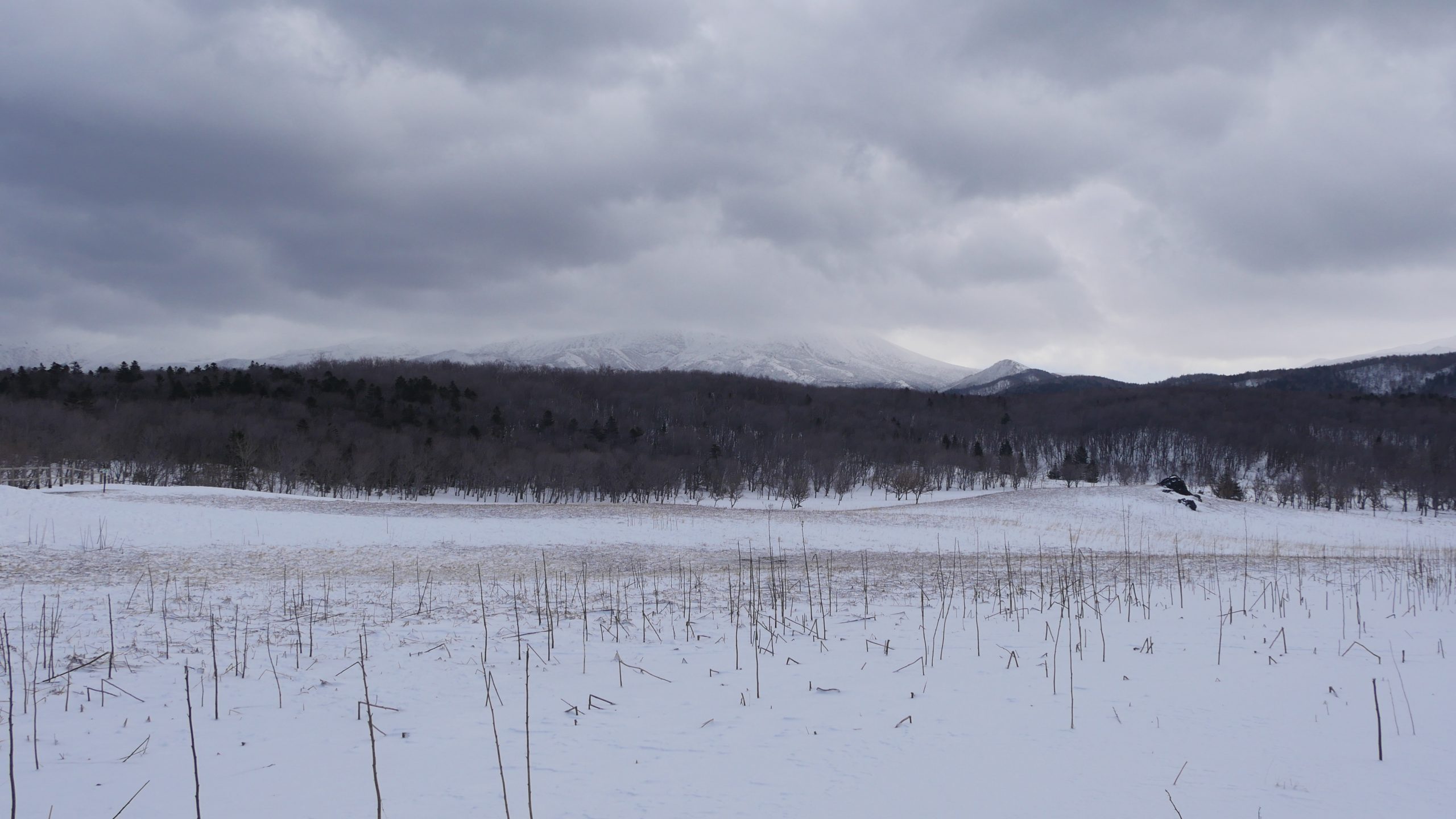
Scenery of the Shiretoko Peninsula / Field near Furepe Waterfalls
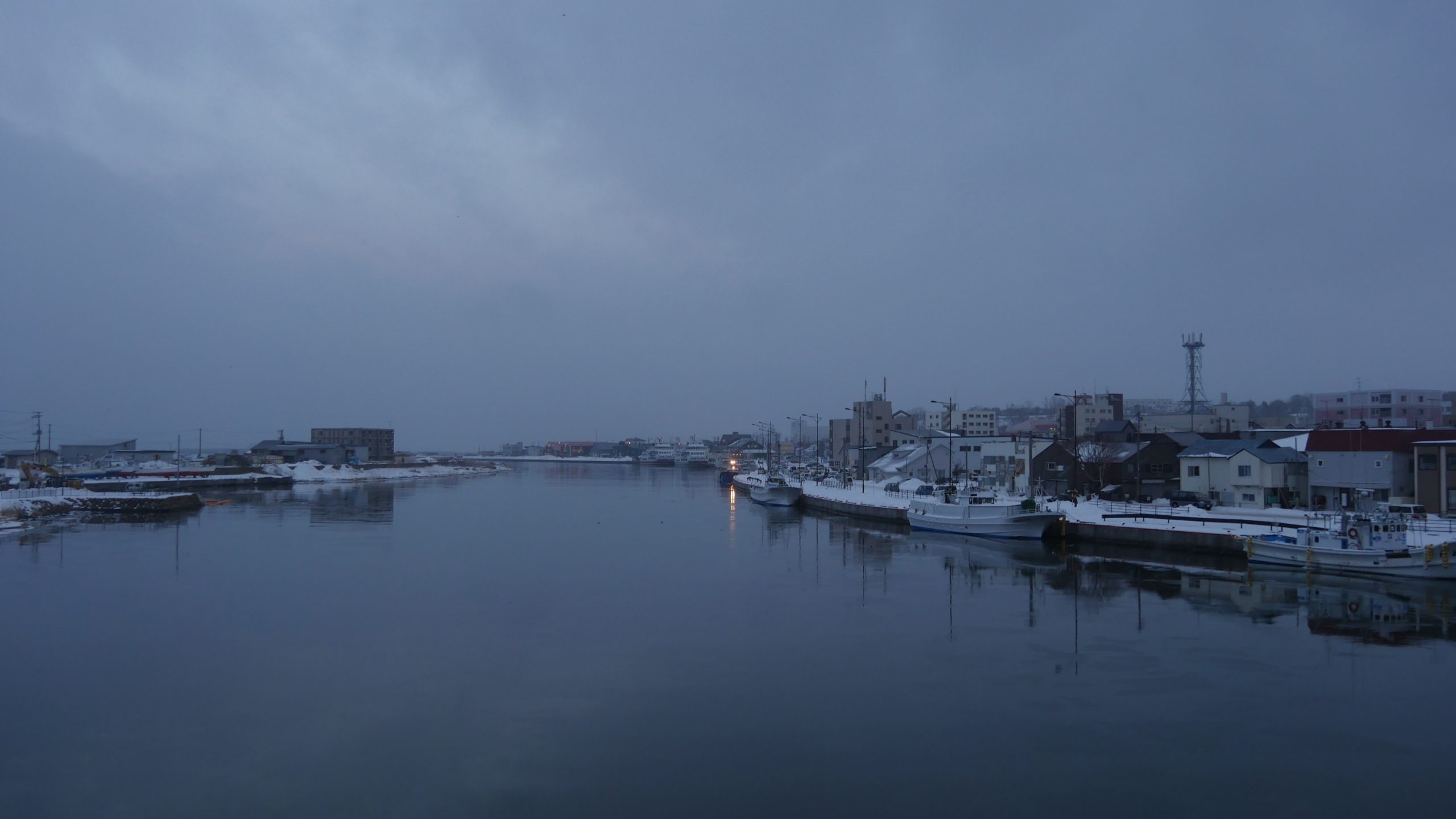
Scenery of Abashiri
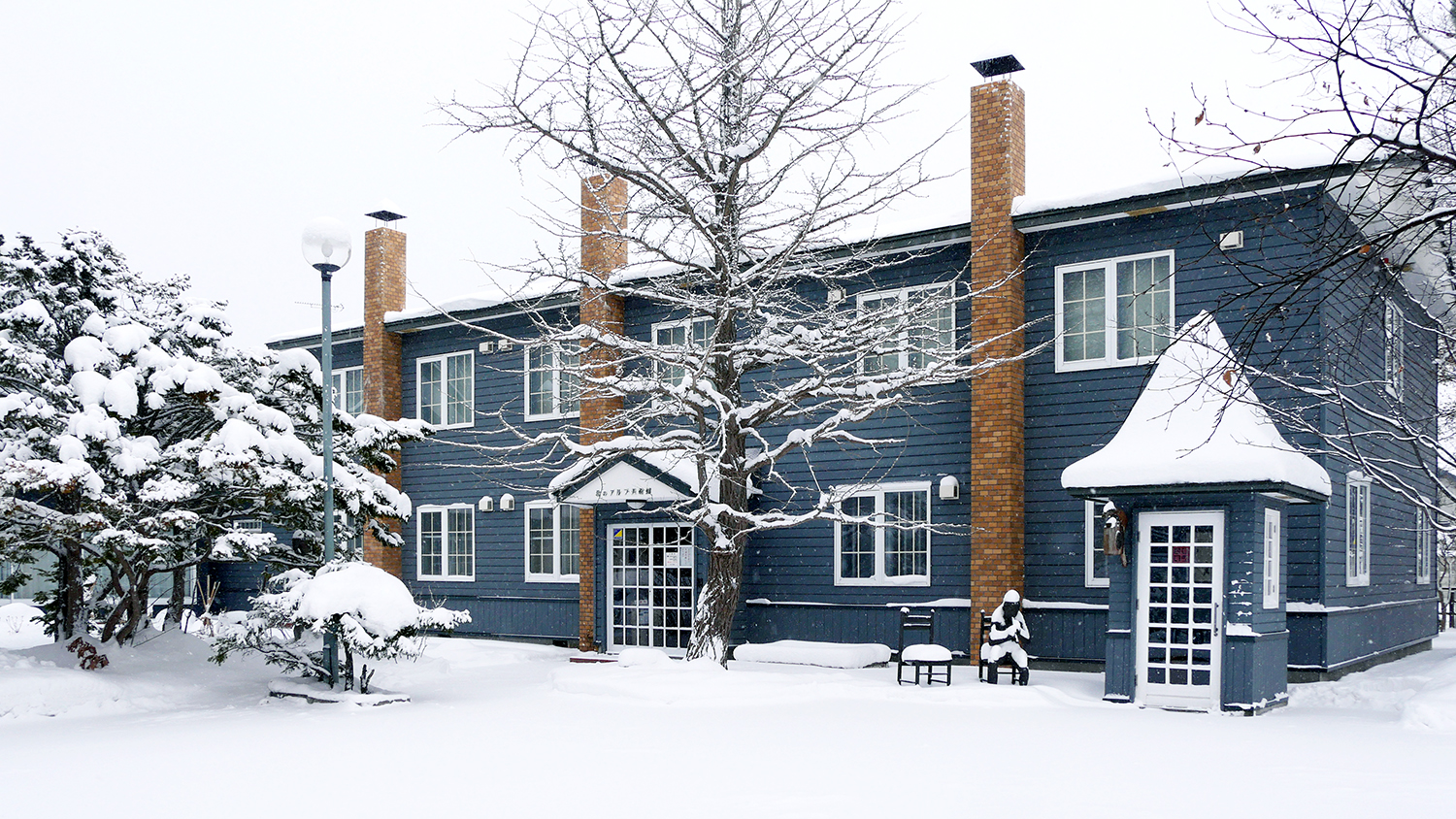
The Northern Alps Museum, Shiretoko-Shari, Japan
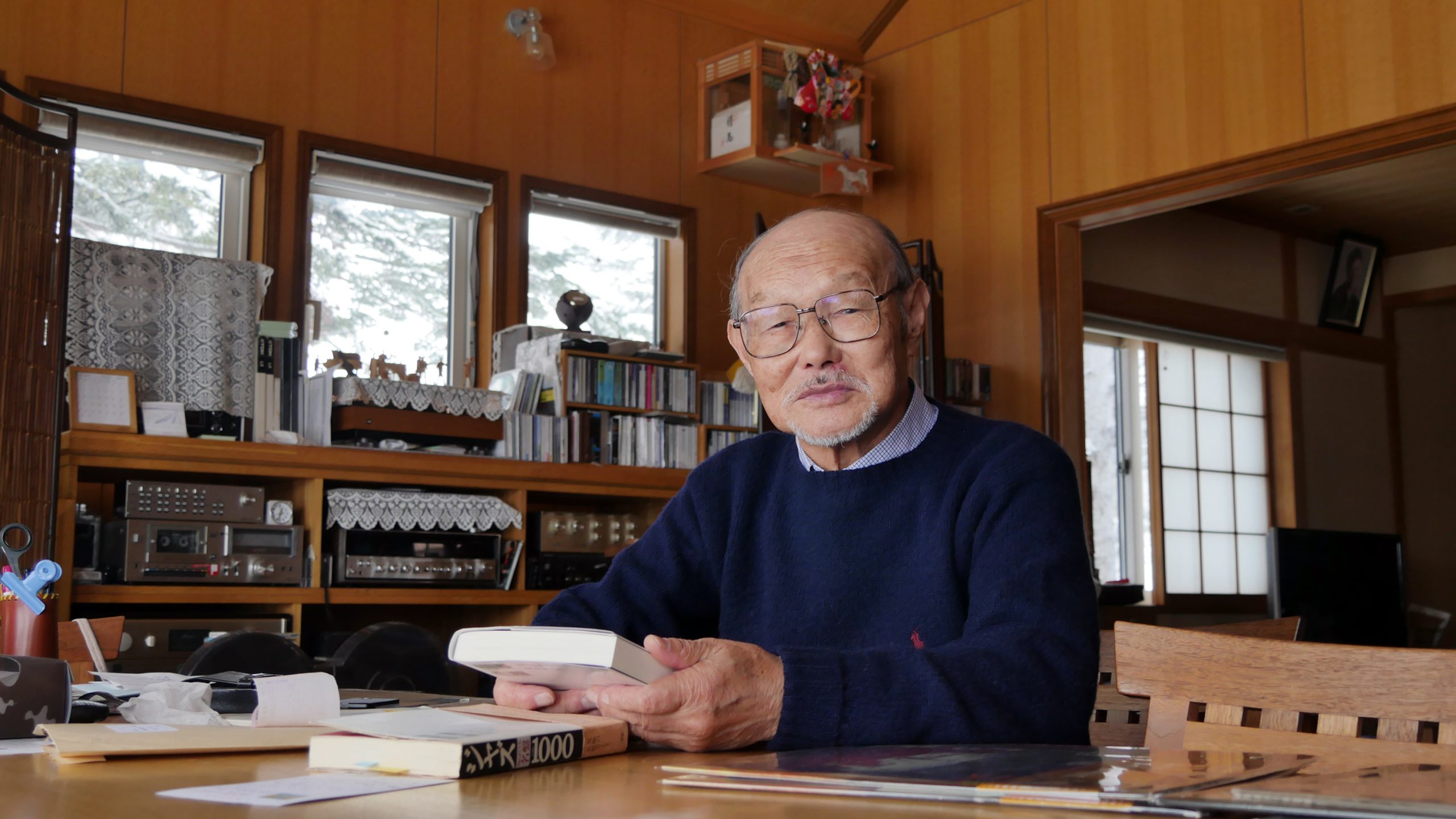
Mr.Yamazaki – The Northern Alps Museum director
At the end of my stay, Mr. & Mrs. Yamazaki and Yoshiko kindly organized an event at the museum. Mr. Yamazaki gave a guided tour of the museum and I did a storytelling performance of the lion project. Despite the event being on the Christmas day, many visitors came from Shari and also more faraway places and the event turned out to be a warm, sociable gathering. The audiences from different occupations and ages enthusiastically listened to the talks and exchanged their comments and opinions. I have done many talk events as an artist, but the storytelling performance I did at the Northern Alps Museum is a memorable one for me. I feel very fortunate that I had an opportunity to spend the precious time with Mr. Yamazaki and everyone at the event.

Image of the storytelling performance in the Northern Alps Museum, in the sitting room of the Japanese writer, poet, philosopher Magoichi Kushida
In 2019, I was continuously invited to exhibitions held in Sapporo, including “The Earth Stories” at the 500m Museum, and my connection to Hokkaido grew tighter. As I repeatedly visited Hokkaido, I gradually developed a wish to get to know more about Hokkaido through making art projects there and felt the wish growing and getting more concrete.
Just around that time, I encountered the Hong-Kong based artist and scholar Bo Zheng through a job, as a translator, in Kyoto. Through going around Kyoto and helping his research, I learned that he has a wide range of artistic and scholarly practices, focusing on plants and ecology, while incorporating East Asian philosophies and ideas in his practices. I also learned that he is teaching at a university in Hong Kong and supervising a group of PhD research students, who are researching different ecological topics through their unique perspectives. I sensed we have some interests and ideas in common and I started entertaining the idea of joining his research group and doing the art projects in Hokkaido as my PhD research.
In September 2020, I started my PhD research in the strangely silenced Hong Kong without any obvious trace of the protest, in the midst of the covid-19 pandemic. The research group I have joined is called Wanwu Practice Group (wanwu is a Chinese word, referring to all living things and existing matters in the Universe). Bo Zheng and seven research students from different cultural backgrounds and fields, such as artist, activist, art historian, and anthropologist, are in the group, doing our own research and practices while learning through each other’s activities. In this new situation, I have my base outside Japan again after my relocation to Japan seven years ago. But for me, this is not to leave Japan but rather to create a distant base and viewpoint in order to better approach and understand Hokkaido and Japan.
Now I am at the place, seeing the scenery, which I had never imagined three years ago when I first encountered Hokkaido. When I noticed, Hokkaido has become an indispensable place for me; the field for my research and my place in the world. For the next four years, I plan to spend time in Hokkaido; the island with unique geographic, climatic, ecological, and cultural features, and make art projects focusing on the ecosystems – entangled relationships among different species and environments – embodied in different practices rooted in Hokkaido. I sincerely hope that my research and artistic activities in Hokkaido will bring me many more encounters with interesting places, people, different living species, non-living objects and matters.
Artwork presented in The Earth Stories exhibition at the 500m Museum:
Geochronostromatopio
2019 / Installation with large posters and peridotite rocks from Hokkaido / Collaboration work with Shojiro Okuno©Shojiro Okuno
Proofread by Mark Walker
Aki Nagasaka (b. 1980 in Osaka, Japan) is an artist based between Japan and Hong Kong. She starts her projects through chance encounters with persons, objects, and events in her daily life. Using multi-faceted research, physical action, and storytelling as her main methods, she creates stories that connect seemingly independently existing matters, reveals undercurrents in society, and presents her personal viewpoint that challenges established norms and larger history.
Nagasaka received her BFA from the University of Texas at Austin, her Meisterschüler from the Städelschule in Frankfurt, and conducted one-year research in London; supported by the Cultural Agency of the Japanese government. She is currently pursuing her PhD at the School of Creative Media, City University of Hong Kong. Her institutional exhibitions include: Times of Crisis (MAMbo – Museum of Modern Art of Bologna, 2021 forthcoming), Arts & Routes (Akita Modern Museum of Art, 2020), Quatro Elementos (Galeria Municipal do Porto, 2017), Material and Mechanism (Aomori Contemporary Art Centre, 2014), and Signs Taken in Wonder (The MAK, Austrian Museum of Applied Arts/Contemporary Art, 2013).
https://www.akinagasaka.net
2024.7.9Acasă la Hundorf Residency JournalArtist : Miyake Suzuko
2023.5.14AIR and I, 09 : Mentoring Artists for Women’s Art (MAWA) Residence Report